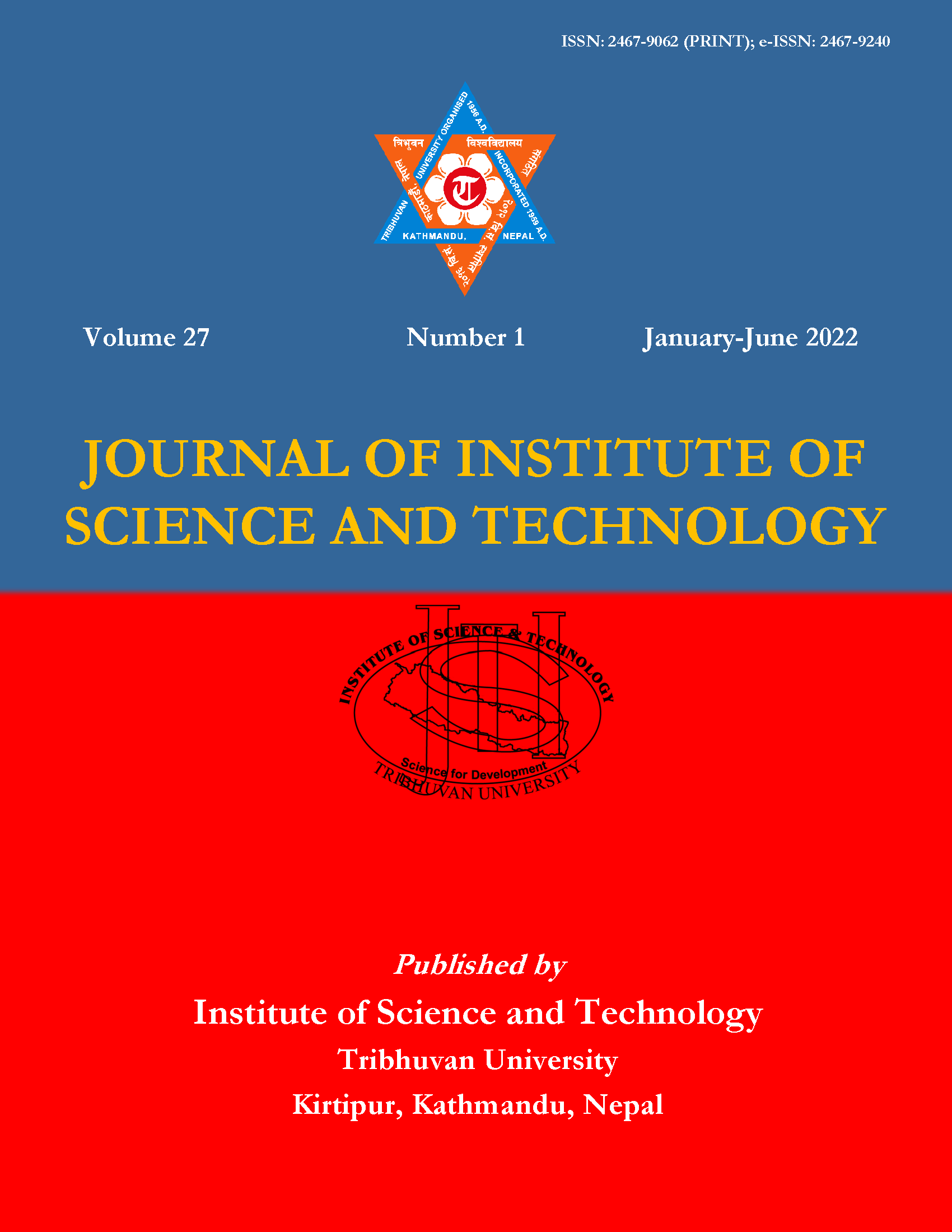Sensing Characteristics of ZnO Nanoparticle Film towards Acetone
DOI:
https://doi.org/10.3126/jist.v27i1.40866Keywords:
Acetone sensor, Operating temperature, Response time, ZnO nanoparticleAbstract
Over the past few decades, nanomaterials of metal oxide such as zinc oxide (ZnO) have been significantly researched for sensing various toxic gases like ethanol, acetone and ammonia. The sensing performance of semiconducting materials depends primarily on their surface structure and the interaction behavior with target gas molecules. The surface quality of ZnO is highly influenced by deposition methods. Although several ZnO surfaces have been rigorously studied for detecting gas leakages, it still possesses drawbacks such as high operating temperature, slow response and recovery times. Henceforth, this investigation was carried out to resolve these issues in the fabrication of future ZnO-based gas sensors. In this work, we report the major findings of the ZnO-based nanoparticle film gas sensor prepared by a doctor blade method to gain insight towards detecting various concentrations of acetone gas at different temperatures. The XRD and FTIR results confirmed the phase purity of ZnO. The results showed the highest response ratio of 25.697 0.012 at 285 oC with an exposure of 800 ppm of acetone along with the quick response and recovery times of 39 sec and 79 sec, respectively. This operating temperature was found to be lower than the reported value for a similar system than that prepared via different methods.
Downloads
Downloads
Published
How to Cite
Issue
Section
License
Copyright (c) 2022 Institute of Science and Technology, T.U.

This work is licensed under a Creative Commons Attribution-ShareAlike 4.0 International License.
The views and interpretations in this journal are those of the author(s). They are not attributable to the Institute of Science and Technology, T.U. and do not imply the expression of any opinion concerning the legal status of any country, territory, city, area of its authorities, or concerning the delimitation of its frontiers of boundaries.
The copyright of the articles is held by the Institute of Science and Technology, T.U.




